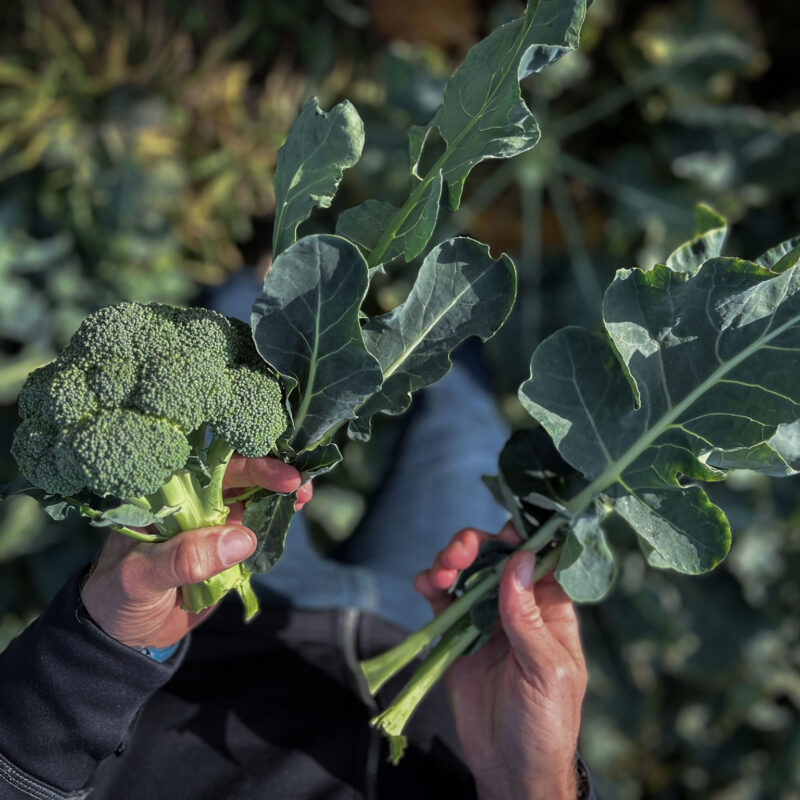Mycoprotein – Can Fungus Revolutionize the Feed Industry?
2024.05.27

Mycoprotein, a fungal mycelium with revolutionary potential not only in food but also in future feed.
Fish feed based on mycoprotein has a low climate impact, minimal environmental footprint, and results in healthy salmon. After years of research, the fish feed industry is convinced of the pro’s with mycoprotein, and the demand is growing within the sector. The project Future Feed also sees significant interest in mycoprotein from the feed industry for poultry and pigs. Axfoundation is collaborating with experts from RISE, SLU, and Cirkulär, among others, to find ways forward for the protein.
Have you eaten Quorn? Then you’ve eaten mycoprotein, a fungal mycelium with revolutionary potential not only in food but also in future feed. In addition to being a super source of protein with high fiber content, mycoprotein can be cultivated using byproducts from the agricultural, food, and forestry industries – a smart circular business.
Research on the impact of mycoprotein on animals such as poultry, pigs, and fish has been ongoing for several years. Since many fish species require higher-quality protein sources than land-based farm animals, there has been an increased willingness within the fish feed industry to pay for potent mycoprotein. This has led market actors to focus primarily on fish feed, but the feed industries for monogastric animals like poultry and pigs are next in line.
What is Mycoprotein?
- “Myco” means fungus, and mycoprotein is a product derived from cultivated fungal mycelium.
- The fungus grows on substrates of carbon, nitrogen, and phosphorus. The carbon source can be byproducts from the food, agriculture, and wood industries, e.g., spent liquor, molasses, ethanol, acetic acid, hydrocarbon, and even diesel.
- An innovation at the forefront is capturing and converting carbon dioxide into ethanol and acetic acid to cultivate protein without photosynthesis.
- Mycoprotein contains about half protein and carbohydrates. It can be used as a protein source for both animals and humans.
- In fish feed, mycoprotein can serve as an alternative protein source, replacing for example commonly used fishmeal and soy protein.
- Food products containing mycoprotein were commercialized in the UK in the 1980s under the name Quorn.
From Shake Bottles to Tanks and a New Facility
At RISE Processum in Örnsköldsvik, research on mycoprotein and cellulose-based substrates is underway. For over a decade, Björn Alriksson, Researcher and Business Developer in Biotechnology, and Andreas Hörnberg, Senior Research Development Engineer, have been experimenting and developing mycoprotein using forestry byproducts. Initially, they were fairly alone in working with filamentous fungi and cellulose-based substrates from the forestry industry.
Initially, we used 50-milliliter shake bottles to cultivate mycoprotein. Today, the cultivation takes place in large tanks, and a new research facility is under construction with a capacity of a hundred kilograms per day.
– Andreas Hörnberg, RISE Processum

Andreas Hörnberg, RISE Processum
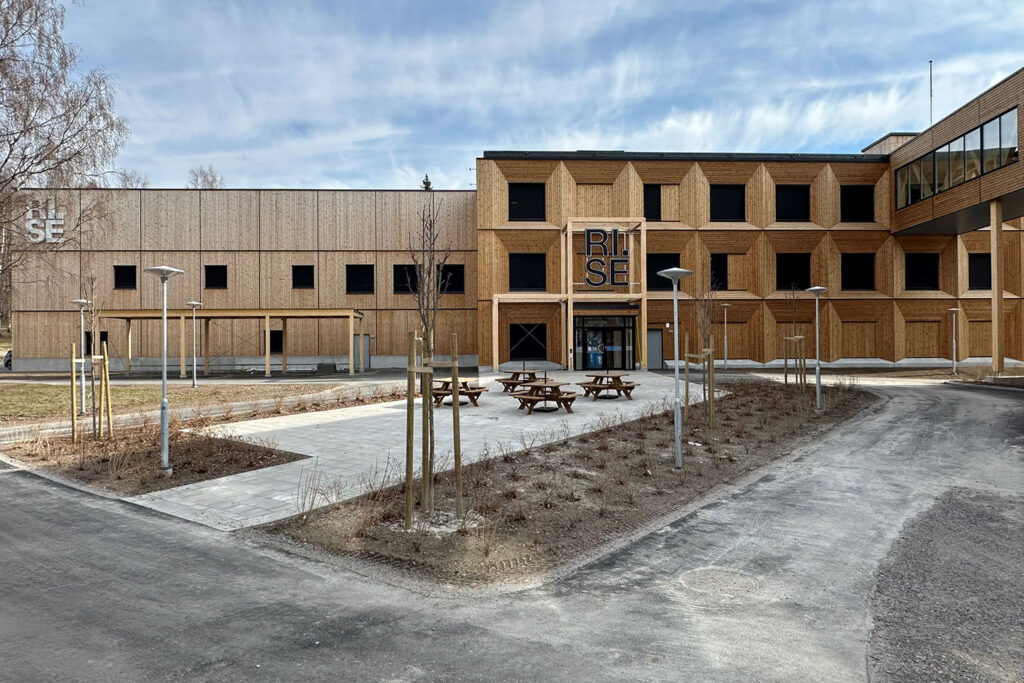
RISE Processum in Örnsköldsvik.
The Substrate is Byproducts from Pulp Mass
The substrate that the filamentous fungus grows on at RISE Processum is spent liquor, a byproduct formed during pulp cooking at the biorefinery Domsjö Factories in the same city. The fungus is grown in large tanks and harvested continuously. The dried and grounded mycoprotein is one of the ingredients that will be included in the fish feed in the project The Feed of the Future for Fish, Pigs, Poultry and Laying hens but mycoprotein will also be used in digestibility studies for poultry and pigs.
Over the past decade, research colleagues Björn Alriksson and Andreas Hörnberg have seen a growing interest in mycoprotein-based fish feed.

Björn Alriksson, RISE Processum
It’s exciting to enter an area where the interest is growing. We have tested mycoprotein in feed for different types of fish and can prove that it actually works. Now, the focus is on refining the process and scaling up.
– Björn Alriksson, RISE Processum
High Demand from the Fish Feed Industry Enables Scaling Up
Scaling up is one of the keys to making the production of mycoprotein economically viable. The facilities are large investments, manufacturing is energy-intensive, and it requires environmentally sustainable and inexpensive substrate in large quantities. However, there is a growing interest in mycoprotein from the fish feed industry, as they are under pressure to reduce its environmental and climate impact and to find sustainable alternatives to soy and fishmeal.
Years of studies also show that fish grow better, absorb more protein, have better gut health, and have stronger immune systems from eating fungus than soy. This is partly due to factors such as:
- Beta-glucans in the fungus have immunostimulating effects.
- Mycoprotein contains good fibres.
- The amino acid profile is better than in soy.
From Research to Commercial Market
One of the commercial actors that will bring mycoprotein to the market is the Lund-based company Cirkulär. It started in 2019 as a research-intensive company focused on genetically modifying fungus into casein, a milk protein. However, Eric Öste, one of the founders, soon realized some customers wanted the protein-rich fungus as it is.
The fish feed industry has seen that mycoprotein works. We wanted to create impact, so we went ‘all in’ and built a pilot facility.
– Eric Öste, founder of Cirkulär.
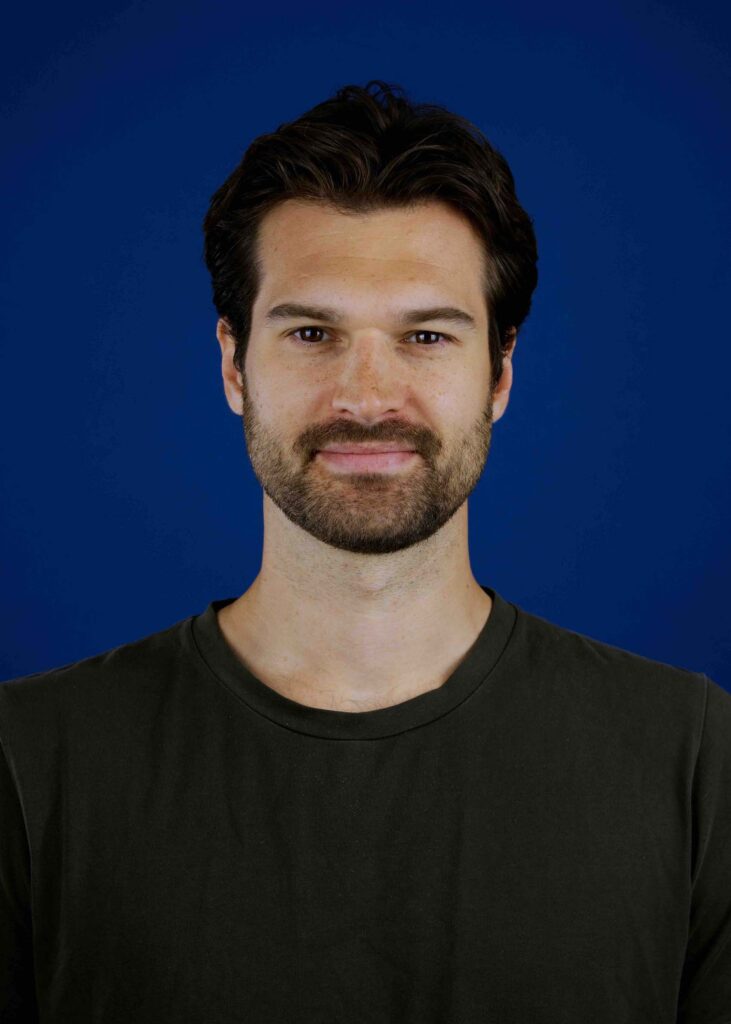
Eric Öste, founder of Cirkulär.
The pilot facility is located at the Sylvamo paper mill. A byproduct from pulp production, sulfite liquor, is included in the substrate that feeds the fungus in two tanks, one half a cubic meter and the other five cubic meters large. Each month, Cirkulär can produce about two tons of product, mycomeal, to evaluate together with customers. Now it’s time for scaling up, and a new facility is planned.
High Demand from the Fish Feed Industry
Jeanna Peebo is Chief Strategy Officer at Cirkulär. Her mission is to find investors and take the business to the next level. She already notices great interest.
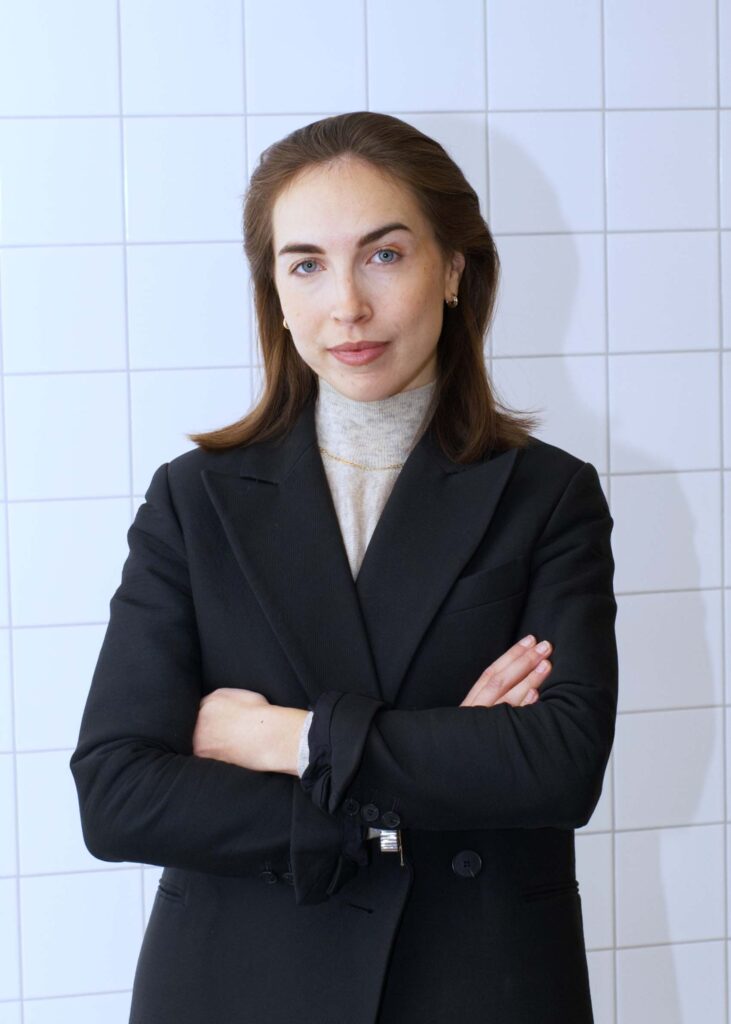
Jeanna Peebo, Chief Strategy Officer at Cirkulär.
There is an extreme market pull from the fish feed industry. More than 70% of the fish farms’ emissions come from feed, and there is pressure to reduce environmental impact. Here, we can create value and become profitable.
– Jeanna Peebo, Cirkulär.
According to Jeanna Peebo, large volumes are crucial to maintaining a good price level. By 2026, Cirkulär plans to have a commercial facility that can produce 20,000 tons of dry product per year. The focus is largely on salmon farming in Norway, which holds a great share of the global market for farmed salmon.
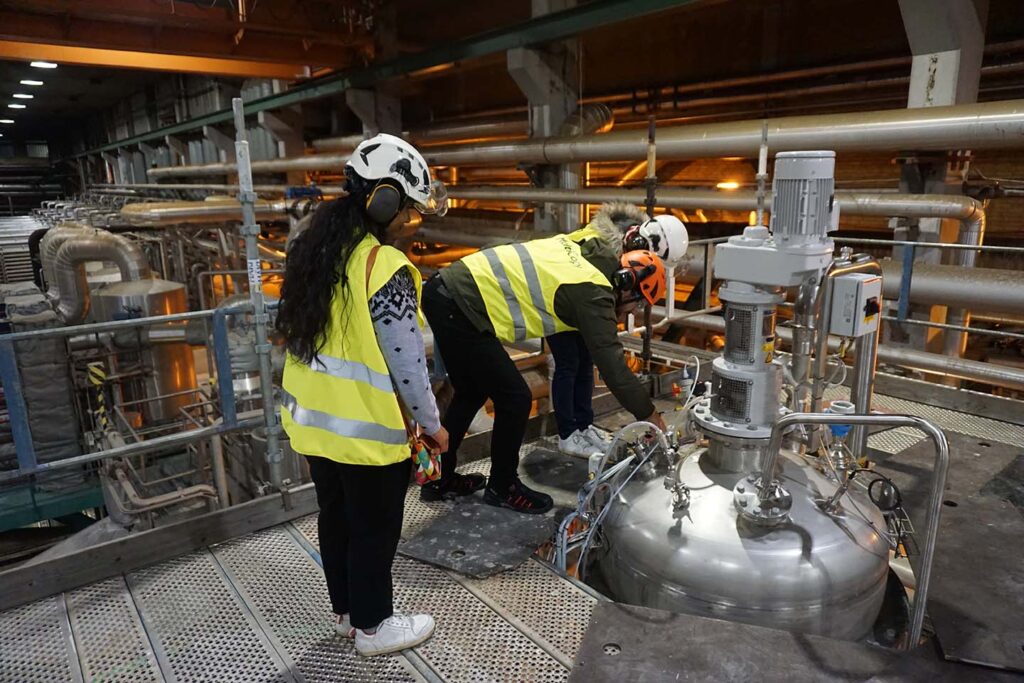
Mycoprotein is produced in large tanks in the pilot facility at Cirkulär.
Mycoprotein: A Vital Alternative to Soy
Tomas Linder, a Lecturer in Microbiology at the Swedish University of Agricultural Sciences (SLU), has more than once heard the argument that ‘it would be better if everyone stopped eating meat than to develop sustainable feed’. Tomas Linder’s response is that we both need to reduce meat consumption per capita and find alternatives to soy, which occupies enormous land areas and leads to decreased biodiversity and depleted soils.
Given the climate and environmental impact of soy, Tomas Linder believes that the mycoprotein alternative should be promoted at a government level, as he views food supply as an existential issue. A vulnerability with mycoprotein lies in the cost picture – the production is energy-intensive. Financial incentives could ensure that a certain amount of mycoprotein is produced each year, as a matter of crisis preparedness, and that it’s sustainably produced.
Smart governmental subsidies to mycoprotein could yield larger volumes, reduced costs for both farmers and fish farmers, and improved food security for Sweden.
– Tomas Linder, SLU
Why is Mycoprotein Suitable in Feed?
- Globally, 250 million tons of soy are produced per year, and the majority goes to feed. Soy plantations are often monocultures that occupy vast areas and contribute to greenhouse gas emissions, depleted soil, and loss of biodiversity.
- Feed also often includes fishmeal, an unsustainable ingredient that depletes ocean resources. An increasing proportion of marine fish stocks are classified as overfished.
- Today, up to 70% of all the proteins used in animal feed in Europe are imported, including soy. This figure has remained the same for about 40 years, indicating a constant protein deficit in Europe.
- Mycoprotein is cultivated with low-value byproducts and does not occupy arable land.




















